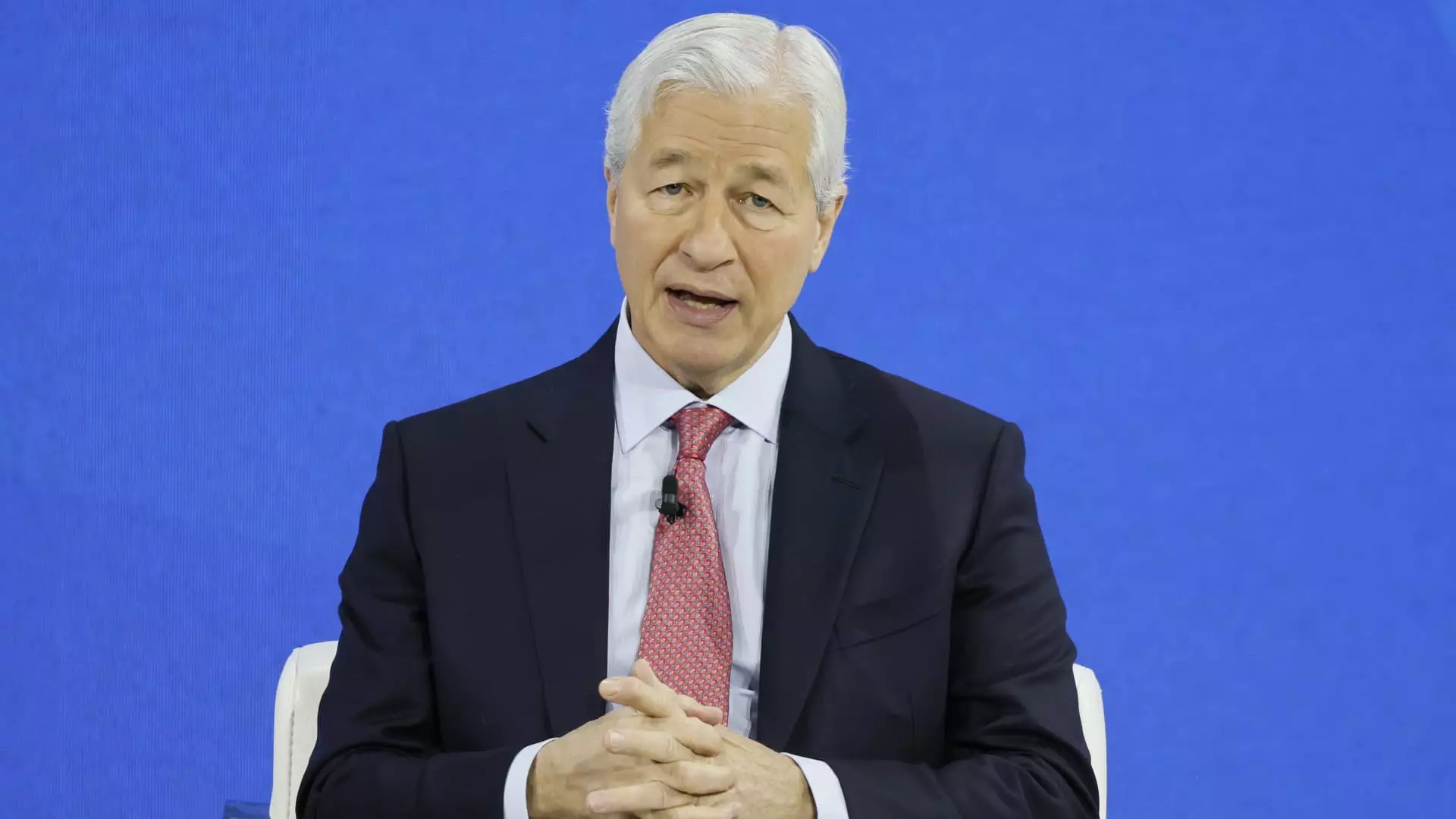JPMorgan Chase, a behemoth in the banking sector, reported its third-quarter earnings, showcasing a robust performance that exceeded analysts’ expectations. The financial giant highlighted not only its profitability but also the underlying factors contributing to its outcomes amidst an intricate economic landscape. Despite a modest decline in profit compared to last year, the bank’s ability to grow its revenue and interest income reveals a complex interplay of strategic decisions and external market conditions.
In a detailed analysis, JPMorgan reported its earnings per share at $4.37, significantly surpassing the LSEG estimate of $4.01. Interestingly, while the earnings per share reflect a strong performance, the net profit saw a slight decrease of 2%, landing at $12.9 billion. This contradiction demonstrates the bank’s ability to enhance revenue, which grew by 6% reaching $43.32 billion, compared to an estimated $41.63 billion. Here, we see a financial institution adept at navigating challenges, though not without acknowledging a drop in profit margins.
Central to JPMorgan’s success this quarter was a 3% increase in net interest income, posting $23.5 billion—above the anticipated $22.73 billion. Such growth can be attributed to significant gains from investment securities and an uptick in credit card loans. It illustrates a decisive move towards leveraging interest-generating assets in a setting where rates have been on the rise. This adaptation highlights JPMorgan’s resilience and strategic focus on growth sectors even amid economic unpredictability.
CEO Jamie Dimon’s insights resonate powerfully in the context of current economic trends. His remarks concerning the regulatory framework messages a pro-active approach, urging a re-evaluation of existing rules that govern the banking sector. He emphasizes the necessity for financial regulations that do not stifle economic growth while still promoting stability. Dimon’s perspective aligns with the bank’s strategic agility, showcasing a desire to foster a balanced financial ecosystem that considers both growth opportunities and systemic risks.
Moreover, Dimon underlines the pressing geopolitical tensions, categorizing the current landscape as “treacherous and getting worse.” Such recognition reflects an astute awareness of external factors influencing market performance. It suggests that JPMorgan is preparing itself for potential fallout stemming from geopolitical instability while simultaneously advocating for regulations tailored to foster resilience rather than constrain growth.
The bank’s investment banking segment significantly contributed to its quarterly success, with fees surging 31% to $2.27 billion, exceeding estimates. This prevalence of investment banking indicates robust demand for financial advisory services and capital markets functions, bolstering JPMorgan’s diversified revenue streams. Additionally, fixed income trading and equities trading also reported favorable outcomes, with figures exceeding market expectations.
Encouragingly, JPMorgan updated its full-year outlook for net interest income, raising the estimate from $91 billion to approximately $92.5 billion. This adjustment underscores the management’s optimistic yet calculated stance following their third-quarter performance, with annual expenses projected to decline as well. Such proactive financial forecasting demonstrates a strategic adaptability that could potentially buffer the bank from external pressures, including the anticipated adjustments in interest rates.
However, amidst these positive outcomes, the bank’s provision for credit losses raised some eyebrows, hitting $3.1 billion as opposed to a $2.91 billion estimate. This increase points towards an essential awareness within the bank of potential risks ahead, despite a general strength in consumer credit performance. The assurance by CFO Jeremy Barnum that consumers are on a strong footing sheds light on the cautious optimism within the financial ecosystem.
As we transition from a rising interest rate environment instituted by the Federal Reserve to potential cuts in rates, JPMorgan stands at a crossroads. With yields on loans expected to decline faster than associated funding costs, the concern around squeezed profit margins is palpable. Such transitional dynamics require strategic foresight, as the bank anticipates a dip in net interest income before a recovery trend emerges.
JPMorgan Chase’s third-quarter performance paints a picture of a financial titan that, despite the cyclical nature of its business and external economic factors, continues to navigate through challenges adeptly. Its robust revenue growth, strategic management of investment banking fees, and adjusted projections for the upcoming year underscore resilience. While challenges remain, particularly concerning regulatory frameworks and potential margin compressions, the bank’s proactive approach may fortify its position in an ever-evolving financial landscape.


Leave a Reply